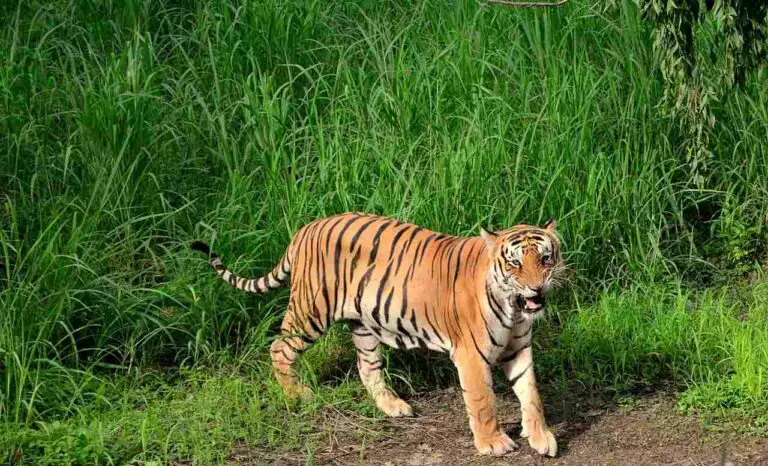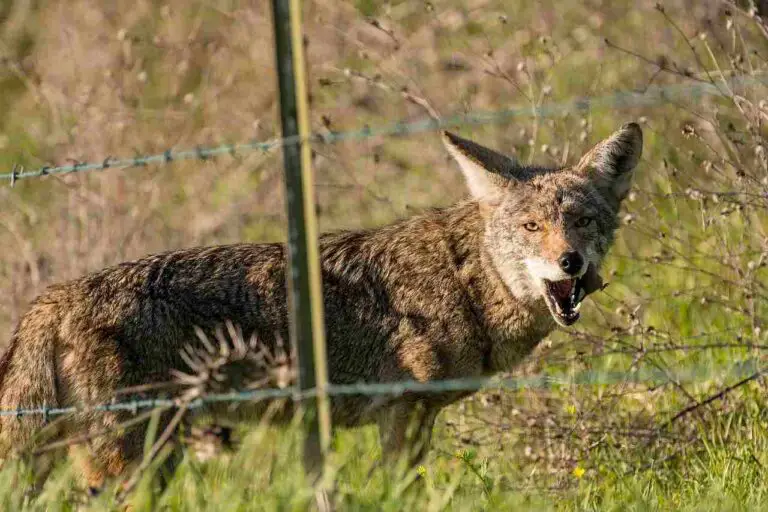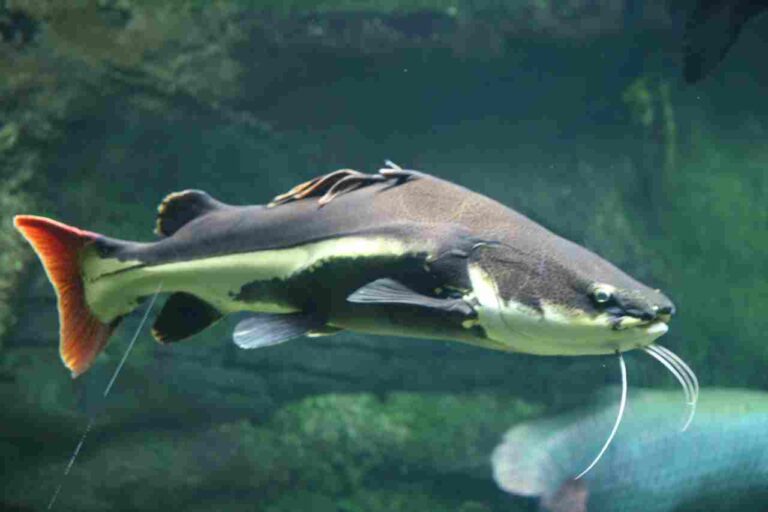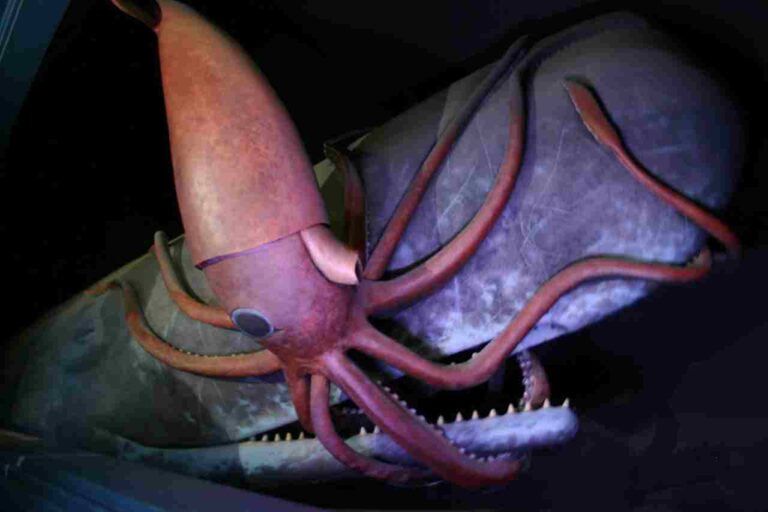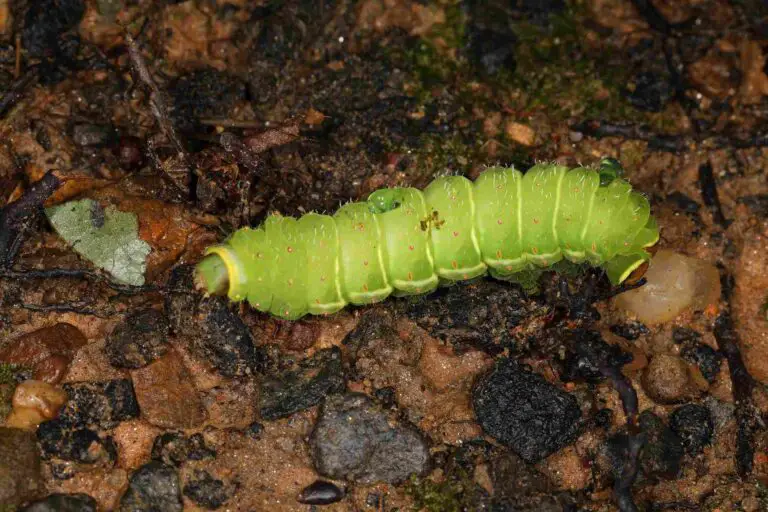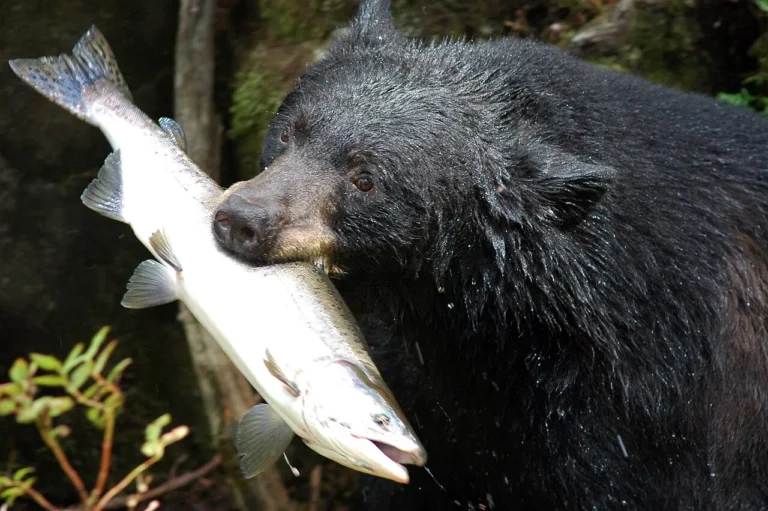What Type of Consumer is A Grasshopper? Trophic Classification of Grasshoppers
A grasshopper is a consumer in the primary heterotrophic level (2) of the food chain, due to its direct dependence on plants as food sources. This article answers the question; “what type of consumer is a grasshopper?” as well as other related queries.
Is a Grasshopper a Heterotroph?
A grasshopper is indeed a heterotroph, relying on external sources for its energy and nutrients. Unlike autotrophs, such as plants, grasshoppers cannot manufacture their own food through photosynthesis. Instead, they must obtain energy from the biomass of plants to survive.
As a primary consumer, a grasshopper occupies the second trophic level in the food chain. This means that it directly depends on plants as its primary food source. Grasshoppers are herbivores, feeding predominantly on plant materials. They play a crucial role in the ecosystem by consuming plant matter and converting it into energy that can be transferred to higher trophic levels.
Grasshoppers commonly feed on a variety of plants, including alfalfa, wheat, corn, barley, rye, and cotton. These plants provide the necessary nutrients and energy for grasshoppers to thrive. By consuming plant matter, grasshoppers contribute to the decomposition process and nutrient cycling within ecosystems.
The diet of a grasshopper consists mainly of plant leaves, stems, flowers, and seeds. They use their specialized mouthparts to chew and consume plant material. Grasshoppers have a high metabolic rate, allowing them to efficiently extract nutrients from their food source.
While grasshoppers are primarily herbivorous, there are some instances where they may exhibit carnivorous behavior. In certain situations, grasshoppers may resort to consuming other insects or even cannibalize their own species. However, these instances are relatively rare and do not significantly impact their overall classification as herbivores.
Is A Grasshopper a Primary Consumer?
A grasshopper is indeed a primary consumer because its diet dominantly comprises materials derived from plants, which are producers. This places the grasshopper in Trophic Level 2 of the food chain. As a primary consumer, the grasshopper plays a crucial role in the transfer of energy and nutrients from plants to higher trophic levels.
Grasshoppers are herbivores, feeding predominantly on plant materials such as leaves, stems, flowers, and seeds. They rely on the biomass of plants to obtain the necessary energy and nutrients for their survival. By consuming plant matter, grasshoppers convert the stored energy in plants into a form that can be utilized by other organisms in the ecosystem.
In the food chain, primary consumers like grasshoppers occupy the second trophic level. They directly depend on plants as their primary food source. Grasshoppers have specialized mouthparts that allow them to chew and consume plant material efficiently. Their high metabolic rate enables them to extract nutrients from their food source effectively.
The role of grasshoppers as primary consumers is essential for the functioning of ecosystems. By consuming plant matter, they contribute to the decomposition process and nutrient cycling. As they feed on plants, grasshoppers break down the organic matter and release nutrients back into the soil. These nutrients can then be taken up by plants, completing the cycle.
Grasshoppers commonly feed on a variety of plants, including alfalfa, wheat, corn, barley, rye, and cotton. These plants provide the necessary nutrients and energy for grasshoppers to thrive. Their feeding habits can have significant impacts on plant populations and community dynamics within ecosystems.
While grasshoppers are primarily herbivorous, there are instances where they may exhibit carnivorous behavior. However, these instances are relatively rare and do not significantly impact their overall classification as primary consumers. Grasshoppers primarily rely on plants as their main source of food, making them an integral part of the primary consumer trophic level.
Therefore, a grasshopper is considered a primary consumer because its diet dominantly comprises materials derived from plants. As a primary consumer, the grasshopper occupies the second trophic level in the food chain and plays a vital role in energy transfer and nutrient cycling within ecosystems.
Is A Grasshopper a Secondary Consumer?
A grasshopper is typically not considered a secondary consumer because its diet primarily consists of plants rather than animals. Secondary consumers are organisms that feed on other consumers, including herbivores like grasshoppers. Instead, grasshoppers are classified as primary consumers, as they directly consume plant materials.
Secondary consumers are higher organisms in the trophic hierarchy that prey on primary consumers. Examples of secondary consumers include frogs, birds, and other predators that feed on grasshoppers and other herbivores. These organisms obtain their energy and nutrients by consuming other consumers rather than directly feeding on plants.
Grasshoppers, on the other hand, are herbivores that rely on plant materials such as leaves, stems, flowers, and seeds for their sustenance. They do not actively hunt or consume other animals as a significant part of their diet.
While there may be instances where grasshoppers exhibit carnivorous behavior, such instances are relatively rare and do not significantly impact their overall classification as primary consumers.
As primary consumers, grasshoppers play a crucial role in the transfer of energy and nutrients from plants to higher trophic levels. They occupy the second trophic level in the food chain, directly depending on plants as their primary food source. Grasshoppers have specialized mouthparts that allow them to efficiently chew and consume plant material. Their high metabolic rate enables them to extract nutrients from their food source effectively.
The classification of grasshoppers as primary consumers is essential for the functioning of ecosystems. By consuming plant matter, they contribute to the decomposition process and nutrient cycling. As grasshoppers feed on plants, they break down organic matter and release nutrients back into the soil. These nutrients can then be taken up by plants, completing the cycle and supporting the overall health of the ecosystem.
Drawing from the above, a grasshopper is typically not considered a secondary consumer because it primarily feeds on plants rather than animals. Grasshoppers are classified as primary consumers, occupying the second trophic level in the food chain.
Their role in energy transfer and nutrient cycling within ecosystems is vital. By understanding the trophic classification of grasshoppers, we can better appreciate their ecological significance and the interconnectedness of organisms within food webs.
Is a Grasshopper a First Level Consumer?
A grasshopper is indeed considered a first level consumer in the trophic hierarchy. This classification is based on its position in trophic level 2, which is directly above the producers in the food chain. As a first level consumer, the grasshopper obtains its food directly from the producers, such as plants.
First level consumers play a crucial role in the transfer of energy and nutrients from the producers to higher trophic levels. They are herbivores that rely on plant materials as their primary food source. In addition to grasshoppers, other herbivores like some birds, rodents, and ungulates are also classified as first level consumers in their respective habitats.
By consuming plant matter, first level consumers like the grasshopper contribute to the flow of energy and nutrients within ecosystems. They help in the decomposition process and nutrient cycling.
As grasshoppers feed on plants, they break down organic matter and release nutrients back into the soil. These nutrients can then be taken up by plants, completing the cycle and supporting the overall health of the ecosystem.
The classification of the grasshopper as a first level consumer highlights its position in the trophic hierarchy and its role in the food chain. Being a first level consumer means that the grasshopper obtains its food before higher consumers in the trophic hierarchy. This is because it directly consumes plant materials, which are the primary source of energy and nutrients in the ecosystem.
Understanding the trophic classification of the grasshopper as a first level consumer allows us to appreciate its ecological significance. It emphasizes the interconnectedness of organisms within food webs and the importance of maintaining a balanced ecosystem.
By studying the different trophic levels and the interactions between consumers and producers, we can gain insights into the functioning of ecosystems.
The explanation so far implies that, a grasshopper is considered a first level consumer because it occupies trophic level 2 directly above the producers. It obtains its food before higher consumers in the trophic hierarchy and plays a vital role in energy transfer and nutrient cycling within ecosystems.
Is a Grasshopper a Herbivore?
A grasshopper is indeed a herbivore, because it primarily depends on materials from plants to survive. Herbivores are organisms that consume plant matter as their main source of food.
Grasshoppers, in particular, have a diet that consists of various plant materials, including leaf tissues, fleshy stalks, and other edible parts of plant organisms.
As herbivores, grasshoppers play a significant role in the ecosystem by contributing to the consumption of plant matter. They are known for their ability to consume large quantities of vegetation, which helps to control plant populations and maintain a balance within the ecosystem. By feeding on plants, grasshoppers also aid in the process of nutrient cycling.

Grasshoppers have specialized mouthparts that allow them to efficiently consume plant materials. Their mandibles are designed to chew and break down plant tissues, enabling them to extract nutrients from the vegetation they consume. This adaptation allows grasshoppers to obtain the necessary energy and nutrients they need for survival.
While grasshoppers are primarily herbivorous, it is important to note that there are some exceptions to this general rule. Recent studies (published in 2022) conducted by a team of paleobiologists from the University of Leicester have revealed that a few grasshopper species possess carnivorous tendencies and adaptations.
These grasshoppers have prominent mandibles that enable them to capture and consume small animals. However, it is important to highlight that this characteristic is rare and not representative of the majority of grasshopper species.
Generally, a grasshopper is classified as a herbivore due to its dependence on plant materials for sustenance. Its diet primarily consists of various plant parts, including leaf tissues and fleshy stalks. By consuming plant matter, grasshoppers contribute to the balance of ecosystems and aid in nutrient cycling.
While there are exceptions to this herbivorous nature, with a few grasshopper species exhibiting carnivorous tendencies, the majority of grasshoppers are indeed herbivores. Understanding the herbivorous nature of grasshoppers allows us to appreciate their ecological role and the interconnectedness of organisms within ecosystems.
Is A Grasshopper A Carnivore?
While grasshoppers are primarily known for their herbivorous nature, there have been recent studies that suggest some grasshopper species possess carnivorous tendencies and adaptations. However, it is important to note that the majority of grasshoppers are herbivores, not carnivores.
Grasshoppers are classified as herbivores because they primarily feed on plants, or autotrophs, for their sustenance. They consume various plant parts, including leaf tissues, fleshy stalks, and other edible parts of plant organisms.
Their specialized mouthparts, such as mandibles, are designed to chew and break down plant tissues, allowing them to extract nutrients from the vegetation they consume. This adaptation enables grasshoppers to obtain the necessary energy and nutrients they need for survival.
However, the aforementioned studies conducted by a team of paleobiologists from the University of Leicester in 2022 have revealed that there are exceptions to the herbivorous nature of grasshoppers. These studies have identified a few grasshopper species with carnivorous tendencies and adaptations, such as prominent mandibles. These grasshoppers are capable of capturing and consuming small animals.
It is important to highlight that this carnivorous characteristic is rare and not representative of the majority of grasshopper species. The vast majority of grasshoppers primarily rely on plant materials for sustenance, making them herbivores. Their diet consists of various plant parts, including leaves, fleshy stalks, seeds, and flowers.
Understanding the herbivorous nature of grasshoppers allows us to appreciate their ecological role and the interconnectedness of organisms within ecosystems.
As herbivores, grasshoppers play a significant role in the consumption of plant matter, helping to control plant populations and maintain a balance within the ecosystem. Additionally, by feeding on plants, grasshoppers contribute to the process of nutrient cycling.
Therefore, while there are exceptions to the herbivorous nature of grasshoppers, with a few species exhibiting carnivorous tendencies, the majority of grasshoppers are indeed herbivores. Their dependence on plant materials for sustenance and their role in the consumption of plant matter highlight their significance in ecosystems.
What Grasshoppers Commonly Eat
Grasshoppers commonly feed on the leaves, fleshy stalks, seeds, and flowers of various plants. One plant that grasshoppers commonly eat is alfalfa. Alfalfa is a legume that provides a rich source of nutrients for these insects. Grasshoppers are attracted to the tender leaves and stems of alfalfa plants, which they consume to obtain the energy and nutrients they need for survival.
Another plant that grasshoppers frequently feed on is wheat. They consume the leaves and stems of wheat plants, causing damage to crops in agricultural settings. In addition to alfalfa and wheat, grasshoppers also consume other crops such as corn, barley, rye, and cotton. These plants provide a food source for grasshoppers, allowing them to thrive and reproduce.
By consuming these plant materials, grasshoppers play a significant role in the ecosystem by controlling plant populations and contributing to nutrient cycling.
1. Alfalfa
Grasshoppers are known to consume alfalfa, a legume that provides them with a rich source of nutrients. When it comes to feeding on alfalfa plants, grasshoppers primarily target the tender leaves and stems. These parts of the plant offer the grasshoppers the energy and essential nutrients they require for their survival.
Alfalfa is a highly attractive food source for grasshoppers due to its nutritional value. The leaves and stems of alfalfa plants are packed with proteins, carbohydrates, and other vital nutrients that support the growth and development of these insects. Grasshoppers are particularly drawn to the succulent nature of the leaves and stems, making them a preferred choice for consumption.
By consuming alfalfa, grasshoppers play a significant role in the ecosystem. They contribute to the control of plant populations and aid in nutrient cycling. The consumption of alfalfa by grasshoppers helps maintain a balance in the plant community and ensures the efficient recycling of nutrients within the ecosystem.
2. Wheat
Grasshoppers consume wheat, a widely cultivated cereal grain. When it comes to feeding on wheat plants, grasshoppers primarily target the leaves and stems. These parts of the plant provide the grasshoppers with the necessary nutrients and energy for their survival and growth.
Wheat is a highly attractive food source for grasshoppers due to its nutritional composition. The leaves and stems of wheat plants contain carbohydrates, proteins, and other essential nutrients that support the development and reproduction of these insects. Grasshoppers are particularly drawn to the tender nature of the leaves and stems, making them a preferred choice for consumption.
By consuming wheat, grasshoppers play a significant role in the ecosystem. They contribute to the regulation of wheat plant populations and aid in nutrient cycling. The consumption of wheat by grasshoppers helps maintain a balance in the plant community and ensures the efficient recycling of nutrients within the ecosystem.
In addition to wheat, grasshoppers also feed on other grass species and similar plants. These plants are nutritious and relatively easy for grasshoppers to consume. The ability of grasshoppers to adapt their feeding habits to different plant species allows them to thrive in various environments and fulfill their role as primary consumers in the food chain.
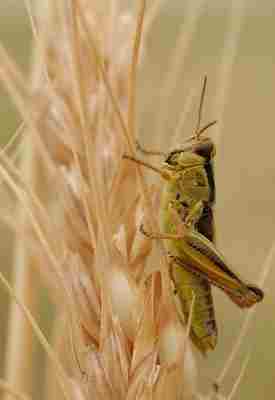
3. Corn
Grasshoppers are also consumers of corn, a widely cultivated cereal crop. When it comes to feeding on corn plants, grasshoppers primarily target the leaves and stems. These parts of the plant provide the grasshoppers with the necessary nutrients and energy for their survival and growth.
Corn is a highly attractive food source for grasshoppers due to its nutritional composition. The leaves and stems of corn plants contain carbohydrates, proteins, and other essential nutrients that support the development and reproduction of these insects. Grasshoppers are particularly drawn to the tender nature of the leaves and stems, making them a preferred choice for consumption.
In addition to corn, grasshoppers also feed on various grass species and similar plants. These plants are nutritious and relatively easy for grasshoppers to consume. The ability of grasshoppers to adapt their feeding habits to different plant species allows them to thrive in various environments and fulfill their role as primary consumers in the food chain.
By consuming corn and other grass species, grasshoppers play a crucial role in the ecosystem. They help regulate the population of corn plants and contribute to nutrient cycling. The consumption of corn by grasshoppers ensures the efficient recycling of nutrients within the ecosystem and helps maintain a balance in the plant community.
4. Barley
Grasshoppers consume barley, which is another widely-cultivated cereal grain. When it comes to feeding on barley plants, grasshoppers primarily target the leaves and stems. These parts of the plant provide the grasshoppers with the necessary nutrients and energy for their survival and growth.
Barley is a highly nutritious food source for grasshoppers. The leaves and stems of barley plants contain carbohydrates, proteins, and other essential nutrients that support the development and reproduction of these insects. Grasshoppers are particularly attracted to the tender nature of the leaves and stems, making them a preferred choice for consumption.
Grasshoppers also feed on various grass species and similar plants, which are rich in nutrients and relatively easy for grasshoppers to consume. The ability of grasshoppers to adapt their feeding habits to different plant species allows them to thrive in various environments and fulfill their role as primary consumers in the food chain.
The consumption of barley by grasshoppers ensures the efficient recycling of nutrients within the ecosystem and helps maintain a balance in the plant community. This highlights the important ecological role that grasshoppers play as herbivores in the natural world.
5. Rye
Grasshoppers are known to consume rye, a popular cereal grain that is widely cultivated. When it comes to feeding on rye plants, grasshoppers primarily target the leaves and stems. These parts of the plant provide the grasshoppers with the necessary nutrients and energy for their survival and growth.
Rye is a nutritious food source for grasshoppers, as the leaves and stems contain carbohydrates, proteins, and other essential nutrients. The tender nature of the leaves and stems makes them particularly attractive to grasshoppers, who find them easy to consume.
In addition to rye, grasshoppers also feed on various grass species and similar plants. These plants are rich in nutrients and provide an abundant food source for grasshoppers. The ability of grasshoppers to adapt their feeding habits to different plant species allows them to thrive in various environments and fulfill their role as primary consumers in the food chain.
The consumption of rye by grasshoppers plays a crucial role in nutrient recycling within the ecosystem. By feeding on rye and other plants, grasshoppers help maintain a balance in the plant community and contribute to the overall health of the ecosystem.
6. Cotton
Cotton is another viable food source for grasshoppers. When it comes to feeding on cotton plants, grasshoppers primarily target the leaves and stems. These parts of the plant provide the grasshoppers with the necessary nutrients and energy for their survival and growth.
Cotton leaves and stems are a rich source of carbohydrates, proteins, and other essential nutrients, making them an attractive food source for grasshoppers. The tender nature of the leaves and stems makes them easy for grasshoppers to consume.
In addition to cotton, grasshoppers also feed on a variety of other plants, including various grass species. This adaptability in their feeding habits allows grasshoppers to thrive in different environments and fulfill their role as primary consumers in the food chain.
The consumption of cotton by grasshoppers has both ecological and economic implications. Ecologically, grasshoppers play a role in nutrient recycling within the ecosystem by feeding on cotton and other plants. This helps maintain a balance in the plant community and contributes to the overall health of the ecosystem.
Economically, grasshoppers feeding on cotton can have negative impacts on cotton crops. Large populations of grasshoppers can cause significant damage to cotton plants, leading to reduced yields and economic losses for farmers.
